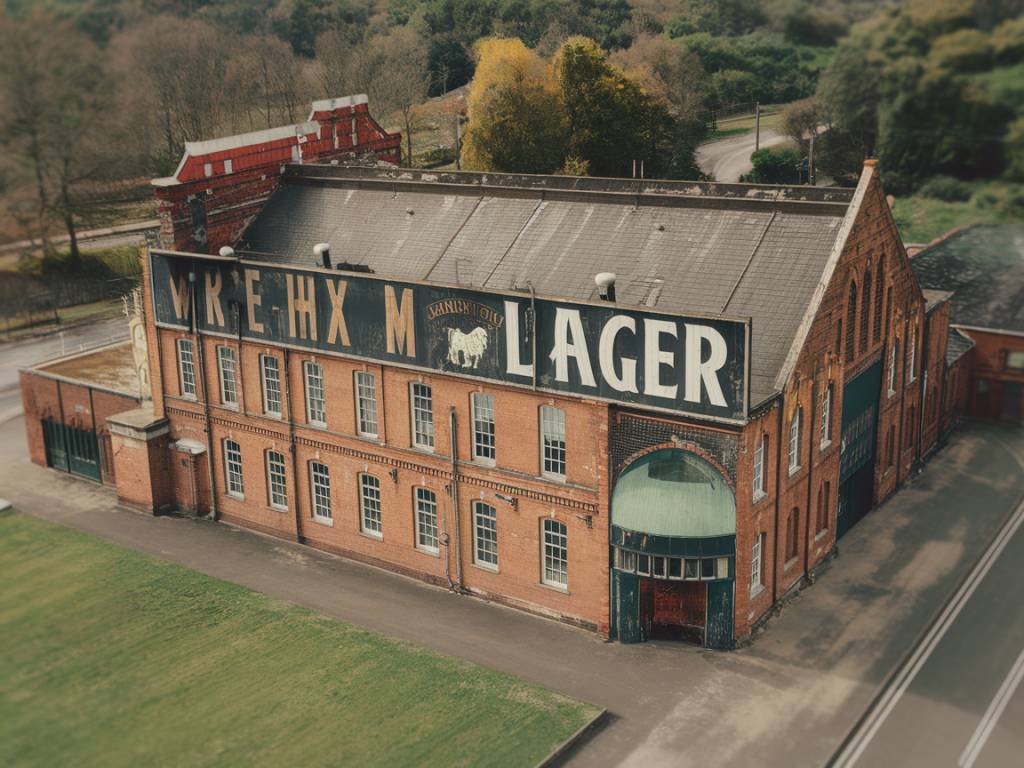There are few names as iconic in the history of Welsh brewing as Wrexham Lager. This pioneering lager beer, first brewed in 1882, has left an indelible mark on the brewing tradition of Wales. Nestled in the town of Wrexham, this storied brewery was one of the first in the UK to produce lager, introducing the crisp, refreshing style of beer to a nation predominantly familiar with ales. But how did a lager born in a small Welsh town carve out such a unique space in brewing history? Let’s dive into its fascinating legacy.
Humble Beginnings: The Birth of Wrexham Lager
The story of Wrexham Lager begins in the late 19th century, a period when the brewing industry in Wales was flourishing. Two German immigrants, Ivan Levinstein and Otto Isler, saw the potential for a lager brewery in Wrexham due to its ideal water quality—an essential ingredient for brewing lager.
The pair founded the Wrexham Lager Beer Company in 1881, bringing German brewing expertise to Wales. Unlike ales, which were top-fermented and served warm, lager required bottom fermentation and cooler storage. This innovative brewing process was aided by the construction of underground cellars, crucial for maintaining the consistent low temperatures necessary for fermentation. Their efforts bore fruit in 1882, when the first crisp, golden pint of Wrexham Lager was poured.
Rising Popularity and Cultural Impact
Wrexham Lager’s arrival coincided with a growing interest in lager across Britain. Its clean, refreshing taste captured the curiosity of beer drinkers, marking a departure from the heavier ales that dominated Welsh pubs. The brewery quickly gained recognition, with its lager being praised for its quality and authenticity.
Wrexham Lager also benefitted from industrial and railway developments. The Wrexham area, with its strategic location and burgeoning rail network, allowed the brewery to distribute its products far and wide. By the early 20th century, the name Wrexham Lager was known not just in Wales or Britain but also internationally. Did you know it was even exported to British colonies across Africa and Asia? It’s fascinating to think of Welsh lager being enjoyed thousands of miles away, connecting cultures through a shared appreciation for good beer.
Wrexham Lager and World War I
The brewery’s fortunes took an unexpected turn during World War I. Wartime restrictions, including rationing and limitations on beer production, posed significant challenges. However, Wrexham Lager’s association with the British Army turned out to be a surprising twist in its story.
The lager became a staple for military personnel, owing to its long shelf life and portability. It could be transported to troops stationed in hot climates, where ales struggled to retain their quality. Anecdotes from soldiers recounting the joy of cracking open a Wrexham Lager in the trenches remind us of how deeply intertwined this drink became with everyday life during the war. It’s a testament to how a simple pint can carry a sense of home, even in the harshest conditions.
The Post-War Expansion and Challenges
After World War I, Wrexham Lager witnessed another period of growth. The brewery continued to innovate, adapting to changing consumer tastes. The mid-20th century saw the brand thrive within a competitive UK brewing industry, where large-scale production and mass marketing began shaping the beer market.
However, the brewery faced challenges as the century wore on. The global brewing landscape shifted, with multinational corporations dominating the scene. By the 1970s and 1980s, Wrexham Lager struggled to compete with larger companies boasting bigger budgets and broader distribution. Coupled with changing consumer preferences, which leaned toward mass-produced lagers, the brewery found itself on shaky ground. In 2000, the original Wrexham Lager brewery sadly closed its doors, leaving behind a rich heritage and countless memories.
A Revival Fit for Legends
But as any good Welsh tale teaches us, resilience is never far behind. Fast forward to 2011, when Wrexham Lager saw a remarkable revival. The Roberts family, local entrepreneurs with a deep passion for the brand’s heritage, reignited the flame, bringing Wrexham Lager back into production.
The revival stayed true to its roots, with the relaunched lager brewed to the original 1882 recipe. This move sparked immense local pride, as the town of Wrexham embraced the return of its beloved beer. Today, the brewery operates with a blend of tradition and modernity, producing Wrexham Lager alongside a variety of other beer styles that pay homage to Wales’ brewing legacy.
Wrexham Lager Today: A Legacy Restored
In the present day, Wrexham Lager continues to shine as a symbol of Welsh brewing craftsmanship. It has become a local—and national—treasure, embodying the rich history, culture, and resilience of Wales. Visitors to Wrexham can experience this slice of history first-hand by touring the brewery, learning about the original brewing methods, and, of course, savoring a pint.
Moreover, Wrexham Lager is also a proud ambassador of Wales on the global stage. Whether you’re enjoying a pint in a Welsh pub or spotting its logo at international events, it serves as a reminder of the ingenuity and dedication that have defined Welsh brewing history.
The Enduring Charm of Wrexham Lager
What makes Wrexham Lager’s story so compelling? Perhaps it’s the perfect blend of tradition and innovation, or maybe it’s the way it weaves together local pride and global impact. For over a century, this humble lager from Wrexham has captured the hearts (and taste buds) of so many. It is more than just a drink; it’s part of the cultural fabric of Wales.
So, the next time you find yourself with a pint of Wrexham Lager in hand, take a moment to reflect on the rich history, the innovation, and the resilient spirit that it represents. Here’s to Wrexham Lager: a testament to Wales’ enduring love affair with brewing.

